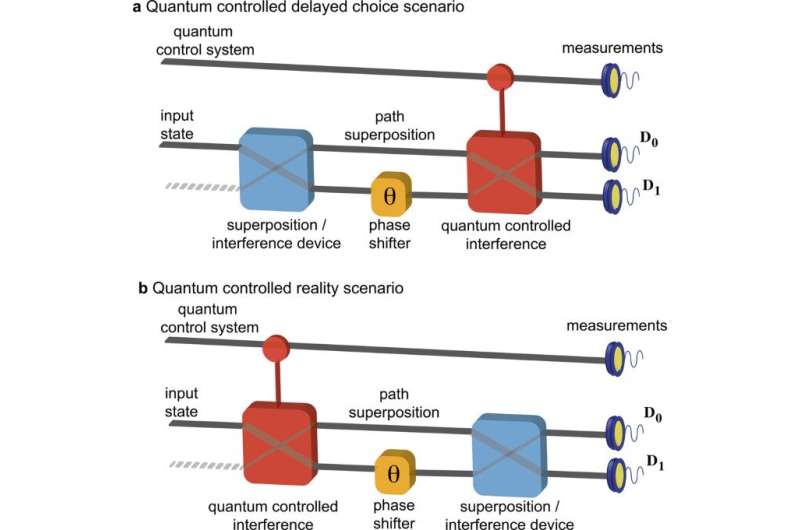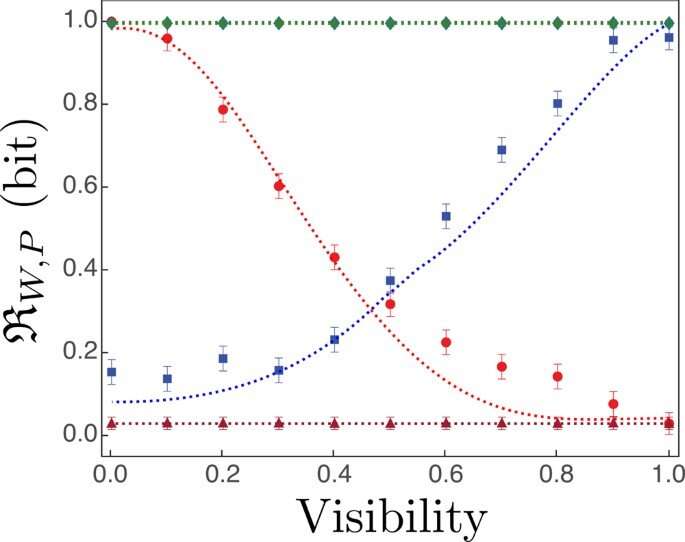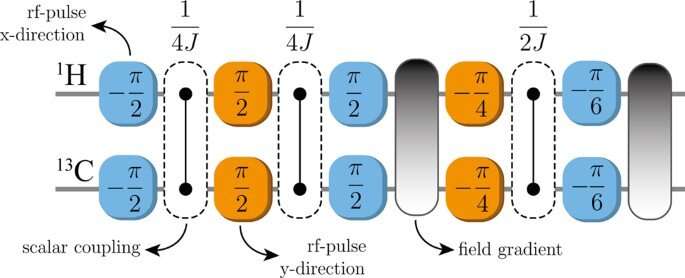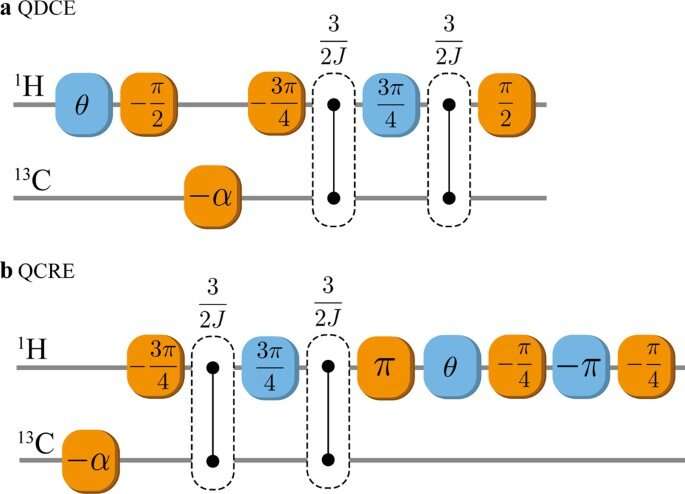April 18, 2022 feature
Assessing physical realism experimentally in a quantum-regulated device

In a new report now published in Nature Communications Physics, Pedro R. Dieguez and an international team of scientists in quantum technologies, functional quantum systems and quantum physics, developed a new framework of operational criterion for physical reality. This attempt facilitated their understanding of a quantum system directly via the quantum state at each instance of time. During the work, the team established a link between the output visibility and elements of reality within an interferometer. The team provided an experimental proof-of-principle for a two-spin-½ system in an interferometric setup within a nuclear magnetic resonance platform. The outcomes validated Bohr's original formulation of the complementarity principle.
Physics according to Niels Bohr
Bohr's complementarity principle states that matter and radiation can be submitted to a unifying framework where either element can behave as a wave or a particle, based on the experimental setup. According to Bohr's natural philosophy, the nature of individuality of quantum systems is discussed relative to the definite arrangement of whole experiments. Almost a decade ago, physicists designed a quantum delayed choice experiment (QDCE), with a beam splitter in spatial quantum superposition to render the interferometer to have a "closed + open" configuration, while the system represented a hybrid "wave + particle" state. Researchers had previously coupled a target system to a quantum regulator and tested these ideas to show how photons can exhibit wave-like or particle-like behaviors depending on the experimental technique used to measure them. Based on the capability to smoothly interpolate the statistics between a wave- and particle-like pattern, physicists suggested the manifestation of morphing behaviors in the same system; claiming a radical revision of Bohr's complementarity principle.

At first, Dieguez et al adopted an operational quantifier of realism depending on the quantum state to allow meaningful which-path statements. They also showed that there were no connections between visibility at the output with wave and particle elements, relative the adopted criterion of realism. The scientists proposed a setup to establish a link between the visibility and wave elements of reality within the interferometer and showed the relevance of quantum correlations to wave-particle duality, followed by nuclear magnetic resonance for experimental scrutiny to argue how the outcomes reiterated Bohr's original views.
Contextual realism in the quantum delayed-choice experiment (QDCE)
Dieguez et al re-assessed the QDCE (quantum delayed-choice experiment) via the elements of reality in the present experimental system. To accomplish this, they added a qubit as a particle-like state after passing the first superposition device or beam-splitter, and the phase shifter in the experimental setup, to implement a relative phase between the paths traveled by the qubit. The team then activated the final superposition device to note the transformation of the state into a wave-like state. Based on the statistics at the output of the circuit, they inferred the path that the qubit traveled in the interferometer. To further understand the process, they computed the realism in the circuit and proposed a framework to discuss the elements of reality for the wave-particle behavior in a quantum-controlled interference device. The results indicated how so-called particle-like states corresponded to a wave reality. As a result, they noted how the qubit always behaved as a wave inside the interferometer in an experimental approach, to demonstrate how the physical reality can be determined by the quantum state at every instant of time.

Quantum-controlled reality experiment (QCRE)
The team next proposed an experiment to solve existing issues of the preceding experimental setup and to effectively superpose wave and particle elements of reality. They computed the states of the whole system, when qubits traveled inside the interferometer right after the phase shift. The interference device put the qubit in a superposition of paths to imply a wave reality. When Dieguez et al deactivated the controlled interference device in the new QCRE setup, the qubit kept traveling its original path as a particle to show a key difference to the original QDCE setup. In contrast to the QDCE, the physicists noted a strict equivalence between the output statistics and the wave-like behavior inside the interferometer. The outcomes corroborated Bohr's original formulation of the complementarity principle.

Proof-of-principle
The scientists next implemented these ideas in a proof-of-principle experiment using a liquid-state nuclear magnetic resonance (NMR) setup with two spin ½ qubits encoded in a sample of 13-C labeled chloroform diluted in acetone-d6. They conducted the experiments in a Varian 500 MHz spectrometer and used the 13C nuclear spin to investigate the realism, and wave and particle features of 1H nuclear spin, which encompassed the interferometric paths. Of the four nuclei isotopes 1H, 13C, 35Cl, and 37Cl available, the team only regulated 1H, and 13C nuclei. The team performed cell spin ½ quantum controlled interferometric protocols using combinations of transverse-radiofrequency pulses on resonance with each of the nuclei, to observe the interferometric pattern.

Outlook
In this way, Pedro R. Dieguez and colleagues employed wave and particle terms to discuss the behavior of a quantum system traversing a double-path setup to produce some signals and statistics in the output. In the quantum delayed-choice experiment (QDCE), the scientists noted how the output visibility did not tell a specific story about qubit behavior inside the circuit. The team then introduced a quantum-controlled reality experiment (QCRE)—an arrangement where the original formation of Bohr's complementarity principle could be afforded, where unlike with QDCE, using the QCRE, Dieguez et al regulated the wave particle elements of reality, to show the possibility of wave and particle superposition in the setup to manifest "morphing realities." The research highlighted the role of the complementarity principle to morph reality states in a quantum controlled system to provide new insights to the nature of quantum causality, reference frames, and realistic aspects of wave and particle properties linked to quantum systems.
More information: Pedro R. Dieguez et al, Experimental assessment of physical realism in a quantum-controlled device, Communications Physics (2022). DOI: 10.1038/s42005-022-00828-z
Gerardo Adesso et al, Wave–particle superposition, Nature Photonics (2012). DOI: 10.1038/nphoton.2012.214
Journal information: Communications Physics , Nature Photonics
© 2022 Science X Network





















